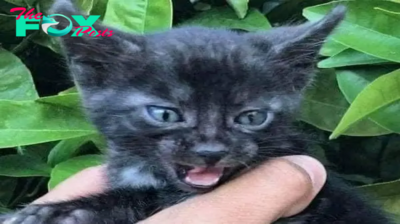Pet
QL Discovering the Exquisite Charm of a Bird with its Vibrant Red Tail, Sunshine Yellow, and Fiery Orange Stripes!
The Fire-tailed Sunbird stands out with its long, fiery red tail, making it easily recognizable. It’s a remarkable little bird!

The fire-tailed sunbird, also known as Aethopyga ignicauda, is a Petite avian species that spans approximately 16 centimeters in length. Its most prominent features include a blazing red head, upper body, and a long, vibrant tail that radiates warmth with its red upper tail coverts. The bird’s chest and belly are decorated with a blend of yellow and red streaks, giving it a unique and eye-catching appearance.

The color of his crow and throat is a shimmering blend of blue and black, while the female bird Sports a yellow-orange hue on her belly and brownish-orange tail sides.

You can spot these winged creatures only in Bangladesh, Bhutan, China, India, Myanmar, Nepal, and Thailand. They are exclusive to these countries.

The Fire-tailed sunbird chooses to inhabit temperate forests and sub-tropical or tropical damp mountain forests.

These birds, while primarily consuming nectar, will also incorporate insects into their diet when the opportunity arises.

The breeding behaviors of this species in the Himalayas and the Hengduan Mountains are not well understood, but it has been noted that the nesting period typically lasts around 19.5 days. Both male and female birds participate in feeding their young, although females tend to feed their offspring more frequently than males. Compared to other birds that live at lower altitudes, the Fire-tailed Sunbird invests more energy into caring for its offspring by laying fewer eggs and providing greater parental care to its young.

The Fire-tailed Sunbird is fortunately not considered to be at high risk, as it falls under the category of Least Concern on the IUCN Red List. You can observe and hear this bird through the video provided below.
-

 Pet51m ago
Pet51m agoSolo en mi cumpleaños: la añoranza de un perro flaco y enfermo por la bondad y el reconocimiento.hanh
-

 Pet11h ago
Pet11h agoThe rescue team found a dog tied to a laundry basket and soon after, they saw small eyes looking at them.hanh
-

 Pet13h ago
Pet13h agoThe British Long-Haired Cat: Elegance, Affection, and Timeless Beauty CB01
-

 Pet13h ago
Pet13h agoSOT.Charmed by Minnie: Captivating Moments with the Curled-Ear Kinkalow Cat.SOT
-

 Pet19h ago
Pet19h agoSOT.Heri’s Teddy: The Heartwarming Journey of Furry Companionship.SOT
-

 Pet19h ago
Pet19h agoSOT.Unmanageable Cat Transforms Remarkably After 8 Weeks with Kind Caregiver Who Helps Her Kittens.SOT
-

 Pet1d ago
Pet1d agoSOT.Majestic Beauty: The Enchanting Allure of the Black Bengal Cat.SOT
-

 Pet1d ago
Pet1d agoSOT.Stray Cat Chooses Safe Home for Her Kittens to Keep Them Out of the Cold.SOT



























